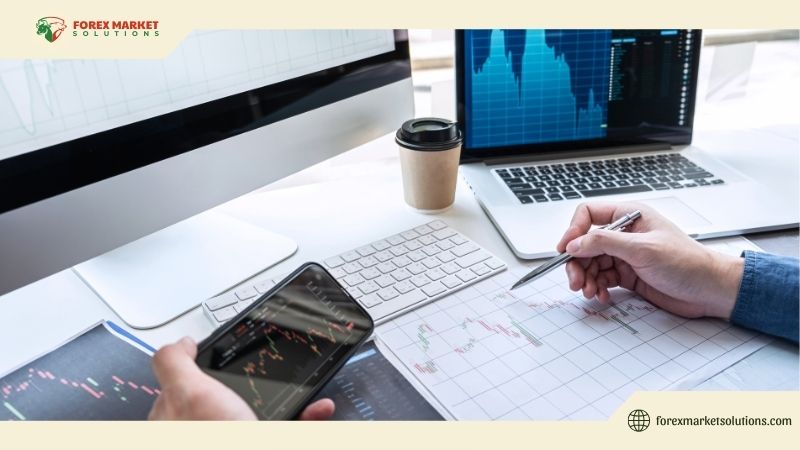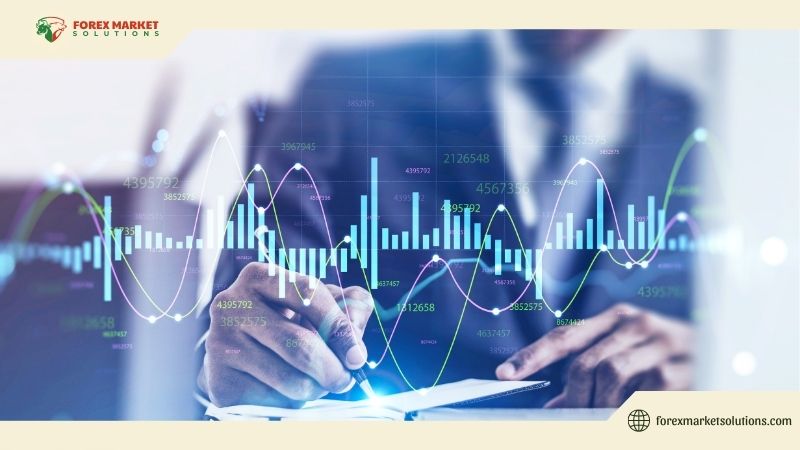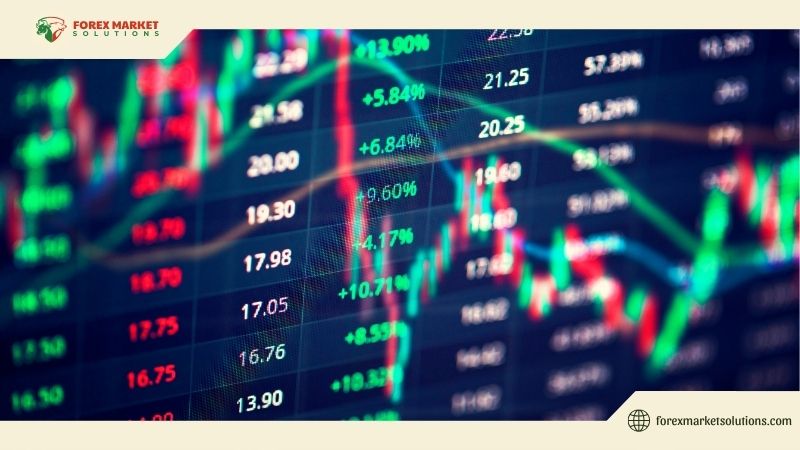Forex trading has solidified its place as a global financial powerhouse, and in Australia, it thrives under a regulatory framework that balances opportunity with security. At the heart of this system is the Australian Securities and Investments Commission (ASIC), a body renowned for its stringent oversight of financial markets, including Forex brokers. For traders in 2025, understanding what is ASIC regulation for Forex brokers is crucial to navigating the market safely and effectively. This article offers an in-depth exploration of ASIC’s role, its rules, and its implications for brokers and traders alike. Whether you’re a beginner seeking a trustworthy platform or a seasoned trader evaluating compliance, this guide will shed light on how ASIC shapes the Forex landscape, ensuring transparency and protection in one of the world’s most dynamic trading environments.

The Role of ASIC in Australia’s Financial Markets
ASIC serves as Australia’s primary financial regulator, tasked with maintaining the integrity of its markets and protecting consumers. Established under the ASIC Act 2001, it oversees a wide range of financial services, from banking to investments, with Forex trading falling squarely within its purview. In the context of Forex, ASIC’s mission is to ensure that brokers operate fairly, safeguard client funds, and provide a transparent trading experience—goals that resonate deeply in 2025 as retail trading continues to grow.
What sets ASIC apart is its reputation for rigorous enforcement. Unlike some jurisdictions with lax oversight, Australia’s regulatory approach is proactive, aiming to preempt issues like fraud or market manipulation. For Forex brokers, this means adhering to a high standard of conduct, a framework that defines what is ASIC regulation for Forex brokers and makes Australia a trusted hub for traders worldwide. This balance of strictness and reliability creates an environment where both brokers and traders can thrive, provided they align with ASIC’s mandates.
Core Principles of ASIC Regulation
Delving into what is ASIC regulation for Forex brokers reveals a set of core principles designed to foster a secure and equitable market. One of the most prominent rules is the requirement for brokers to hold an Australian Financial Services Licence (AFSL). Obtaining an AFSL is no small feat—brokers must demonstrate financial stability, with a minimum capital requirement often set at $1 million for market-making firms, alongside robust risk management systems and qualified personnel. This ensures that only credible operators enter the market, offering beginners and pros alike a layer of confidence in their chosen platform.
Another key pillar is client fund protection. ASIC mandates that brokers segregate client money into separate trust accounts, distinct from their own operational funds. This rule, enforced through regular audits, guarantees that your capital remains safe even if a broker faces insolvency—a critical safeguard in 2025’s unpredictable economic climate. Additionally, brokers must participate in the Australian Financial Complaints Authority (AFCA), an external dispute resolution scheme that provides recourse for traders, further reinforcing ASIC’s commitment to consumer rights. These principles form the bedrock of what is ASIC regulation for Forex brokers, prioritizing stability and trust.

Leverage and Risk Management Rules
A defining aspect of what is ASIC regulation for Forex brokers is its approach to leverage and risk. In 2021, ASIC introduced leverage caps for retail traders, a policy still active in 2025, limiting leverage to 30:1 for major currency pairs like AUD/USD and 20:1 for minor pairs. This restriction aims to curb excessive risk-taking, particularly among inexperienced traders who might otherwise amplify losses in pursuit of quick profits. Professional traders can opt for higher leverage by proving their expertise and financial capacity, but retail clients remain under these protective limits, reflecting ASIC’s focus on risk mitigation.
Beyond leverage, ASIC enforces negative balance protection, ensuring traders cannot lose more than their account balance—a vital shield against debt in volatile markets. Brokers must also provide clear risk warnings, such as “74-89% of retail investor accounts lose money when trading CFDs,” to educate clients about the inherent dangers of Forex. These measures, woven into what is ASIC regulation for Forex brokers, create a safety net that balances opportunity with caution, making Australia’s Forex market accessible yet secure for all participants.
What Is ASIC Regulation for Forex Brokers: Transparency and Compliance
Transparency is a cornerstone of what is ASIC regulation for Forex brokers, ensuring that traders have full visibility into their trading environment. Brokers are required to disclose all costs—spreads, commissions, and overnight swap fees—upfront, eliminating hidden charges that could erode profits. This openness extends to trade execution, where firms must adhere to “best execution” policies, acting in their clients’ best interests by securing optimal prices and speeds. In 2025, as trading platforms evolve with technology, ASIC’s audits ensure these standards hold, maintaining a level playing field.
Compliance is equally rigorous. ASIC conducts regular reviews of licensed brokers, scrutinizing their financial health, operational practices, and adherence to regulations. Failure to comply can result in hefty fines, license revocation, or legal action—consequences that keep brokers accountable. For traders, this means peace of mind when choosing an ASIC-regulated firm, knowing that oversight is active and ongoing. This transparency and enforcement define what is ASIC regulation for Forex brokers, setting a high bar that benefits the entire Forex ecosystem in Australia.

Benefits for Traders in 2025
For traders, understanding what is ASIC regulation for Forex brokers unlocks tangible advantages. The leverage caps and negative balance protection reduce financial risk, making Forex more approachable for beginners while still offering seasoned traders a stable platform. Fund segregation and AFCA membership provide security, ensuring your money is protected and disputes can be resolved fairly—crucial in 2025 as economic shifts test market resilience.
The transparency rules empower you to make informed choices, comparing brokers based on clear fee structures and execution quality. Australia’s proximity to Asian markets also enhances trading opportunities, with pairs like AUD/JPY thriving under ASIC’s watchful eye. These benefits create a regulated yet vibrant environment, allowing traders to focus on strategy rather than worrying about broker reliability. By aligning with ASIC-regulated firms, you tap into a system designed for your success and protection.
Challenges and Comparisons to Global Standards
While ASIC regulation offers robust safeguards, it’s not without challenges. The strict leverage limits, for instance, might push some traders toward offshore brokers offering 500:1 or higher, especially in 2025’s competitive market. However, these unregulated platforms often lack fund protection or dispute resolution, exposing traders to greater risks—a trade-off that underscores ASIC’s value. The AFSL process can also deter smaller brokers, potentially limiting options, though this ensures only well-capitalized firms operate.
Globally, ASIC stands alongside regulators like the UK’s FCA or the US’s CFTC, but its client-centric focus—particularly on fund safety and transparency—sets it apart. Unlike some jurisdictions with lighter oversight, ASIC’s proactive stance in 2025 aligns with Australia’s reputation as a financial leader, offering a model that balances innovation with accountability. Understanding what is ASIC regulation for Forex brokers highlights why it’s a gold standard, even amid these challenges.
The Future of ASIC Regulation in Forex
Looking ahead to 2025 and beyond, what is ASIC regulation for Forex brokers may evolve with emerging trends. The rise of digital currencies and AI-driven trading could prompt new guidelines, ensuring these innovations don’t compromise trader safety. Environmental regulations, tied to Australia’s sustainability goals, might also influence broker practices, favoring firms with green policies. ASIC’s adaptability—seen in past interventions like leverage caps—positions it to address these shifts, keeping Forex trading secure and relevant.
For traders, staying informed about these changes is key. ASIC’s commitment to education, through mandated disclosures and resources, will continue to empower beginners and pros alike, ensuring the regulatory framework evolves with the market. This forward-looking approach reinforces ASIC’s role as a pillar of trust in Forex trading.

Trade with Confidence Under ASIC
Understanding what is ASIC regulation for Forex brokers is your ticket to a safe and rewarding trading experience in 2025. From stringent licensing and fund protection to leverage limits and transparency, ASIC creates a regulated environment that prioritizes your security and success. Choose an ASIC-licensed broker, embrace these rules, and trade with the assurance that comes from world-class oversight. Start your Forex journey on the right foot—knowledge is power, and ASIC delivers it.
Ready to explore Forex trading further? Follow Forex Market Solutions for expert insights, regulatory updates, and strategies to elevate your game. Join us today and trade smarter!
